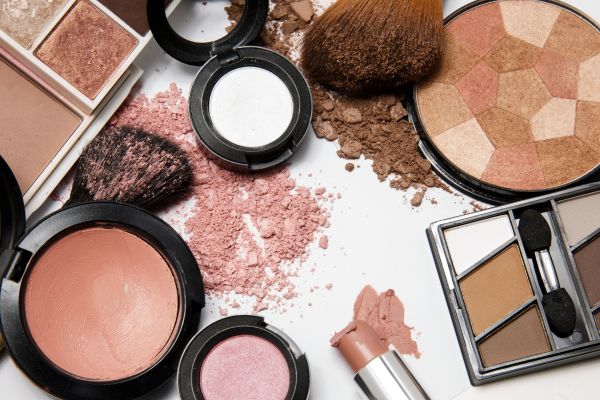Let’s be real—nothing’s more frustrating than buying something you’ve been looking forward to, only to find out it doesn’t work right or worse, it’s dangerous. Maybe it’s a phone that overheats, a car part that fails, or even a kitchen gadget that causes an injury. When that happens, one big question pops up: Who is liable for defective products?
The answer isn’t always simple, but knowing your rights (and who’s responsible) can make a huge difference if you ever end up in that situation.
What Does “Liable” Really Mean?
Before we dive deep, let’s get clear on the word “liable.” It’s basically about legal responsibility. When something goes wrong with a product, someone along the production or sales chain might be legally responsible for the harm it causes. That means they could be required to compensate you or fix the issue.
When it comes to figuring out who is liable for defective products, it could be the manufacturer, the distributor, the retailer, or even a combination of all three. Sounds messy? It can be. But the law has a structure to sort it out.
The Three Main Types of Product Defects
To understand who’s liable, it helps to know what kind of defect you’re dealing with. Generally, there are three types:
1. Manufacturing Defects
These happen when something goes wrong during the production process. Maybe a batch of bicycle helmets leaves the factory with weak straps, or a car’s airbag fails to deploy because of a faulty part. The product design was fine, but somewhere along the line, something got messed up in making it.
In this case, the manufacturer is usually liable because they’re responsible for ensuring that every item coming off the production line meets safety standards.
2. Design Defects
Sometimes, the issue isn’t with the way the product was made—it’s with the design itself. Maybe a chair was designed with legs that are too thin to support average weight, or a children’s toy has small parts that easily break off and pose a choking hazard.
Here, the designer or manufacturer could both share responsibility. They should have foreseen the risk and created a safer version before selling it to the public.
3. Marketing Defects (Failure to Warn)
Ever seen those long warning labels on products? They’re there for a reason. If a product has potential dangers that aren’t obvious—like a chemical cleaner that could burn your skin—and the company doesn’t include a clear warning, that’s a marketing defect.
In these cases, the manufacturer, distributor, or even retailer might be liable for not warning you properly about the risks.
Who Exactly Can Be Held Liable?
Here’s where things get interesting. The liability chain doesn’t stop at the manufacturer. Depending on how the product reached you, multiple parties can be involved.
The Manufacturer
They’re at the top of the chain and often the first target in product liability claims. Whether it’s a small parts supplier or a big brand, if the product was unsafe due to design, manufacturing, or quality control issues, the manufacturer is likely responsible.
The Distributor or Wholesaler
Distributors act as the middlemen between manufacturers and retailers. If they handled or modified the product in any way that contributed to the defect, they might share liability too.
The Retailer
You might not think the store where you bought something would be liable, but they can be. If they sold you a defective item, especially one that was recalled or obviously unsafe, they could be part of the legal responsibility chain.
The Role of Strict Liability
Now, here’s a big one: strict liability. This legal principle means that you, as a consumer, don’t have to prove negligence. In other words, you don’t need to show that the manufacturer or seller was careless—you just have to show that the product was defective and caused harm.
The idea is simple: companies that profit from selling products should ensure they’re safe. If something goes wrong, they take the hit, not the consumer. That’s what makes strict liability so powerful for consumers who might not have the resources to prove exactly where the defect happened.
Real-Life Examples to Make It Clear
Think about some high-profile cases. Remember the stories about exploding smartphones or faulty car airbags? Those weren’t just news headlines—they turned into major product liability lawsuits.
In those cases, manufacturers were held liable because they either knew (or should have known) about the risks and didn’t act fast enough to fix them or warn consumers. The thing is, these cases set the tone for future ones. They remind companies that cutting corners on safety or ignoring potential hazards can cost them millions—and their reputation.
How to Prove Product Liability
So, let’s say you’re dealing with a defective product and want to take action. What would you need to show? Typically, four things:
- The product was defective.
- The defect existed when it left the manufacturer’s hands.
- You used the product as intended (or in a reasonably foreseeable way).
- You suffered injury or damage as a direct result of the defect.
If all those pieces line up, you could have a solid case for compensation.
Common Defenses Companies Use
Of course, companies don’t just roll over. They often have defenses, like claiming the product was misused, altered, or that you ignored safety instructions. Sometimes they even argue that the product’s risks were “known and accepted” by the user (especially in cases involving dangerous sports equipment or chemicals).
That’s why gathering evidence—like receipts, photos of the defect, or even medical reports—can help strengthen your claim if you ever need to file one.
What to Do If You Have a Defective Product
If you find yourself holding a product that’s not just disappointing but potentially dangerous, here’s the thing: don’t ignore it. Report it to the company, check for recalls, and if there’s been harm, talk to a lawyer who specializes in product liability law.
They can help determine who is liable for defective products in your situation, whether it’s a global manufacturer, a small retailer, or anyone in between.
Why Knowing Your Rights Matters
Here’s the truth—companies have legal teams, insurance, and layers of protection. Consumers? Not so much. That’s why product liability laws exist: to level the playing field.
Knowing who is liable for defective products isn’t just about blame—it’s about accountability. When businesses know they can be held responsible, they’re more likely to take safety seriously. It’s a win for everyone.
Final Thoughts
At the end of the day, figuring out who is liable for defective products can feel like walking through a maze. There are manufacturers, distributors, retailers, and all sorts of legal terms that might sound intimidating. But the bottom line is simple: if you’re hurt or affected by a defective product, you have rights—and someone out there is responsible for making it right.
The thing is, accidents happen. But when they happen because of negligence, poor design, or lack of care, accountability matters. And that’s where product liability laws step in—to make sure consumers don’t pay the price for someone else’s mistakes.





